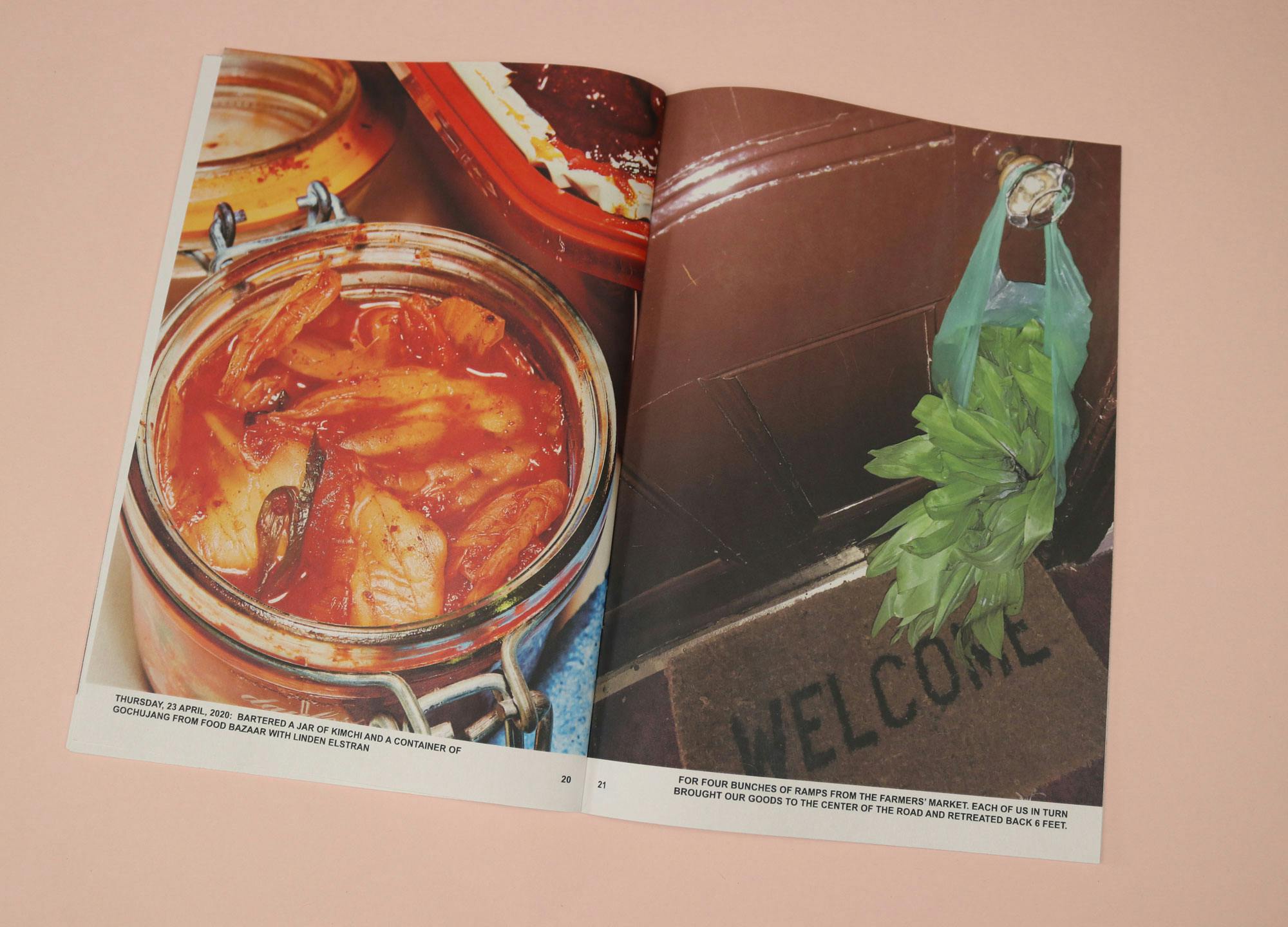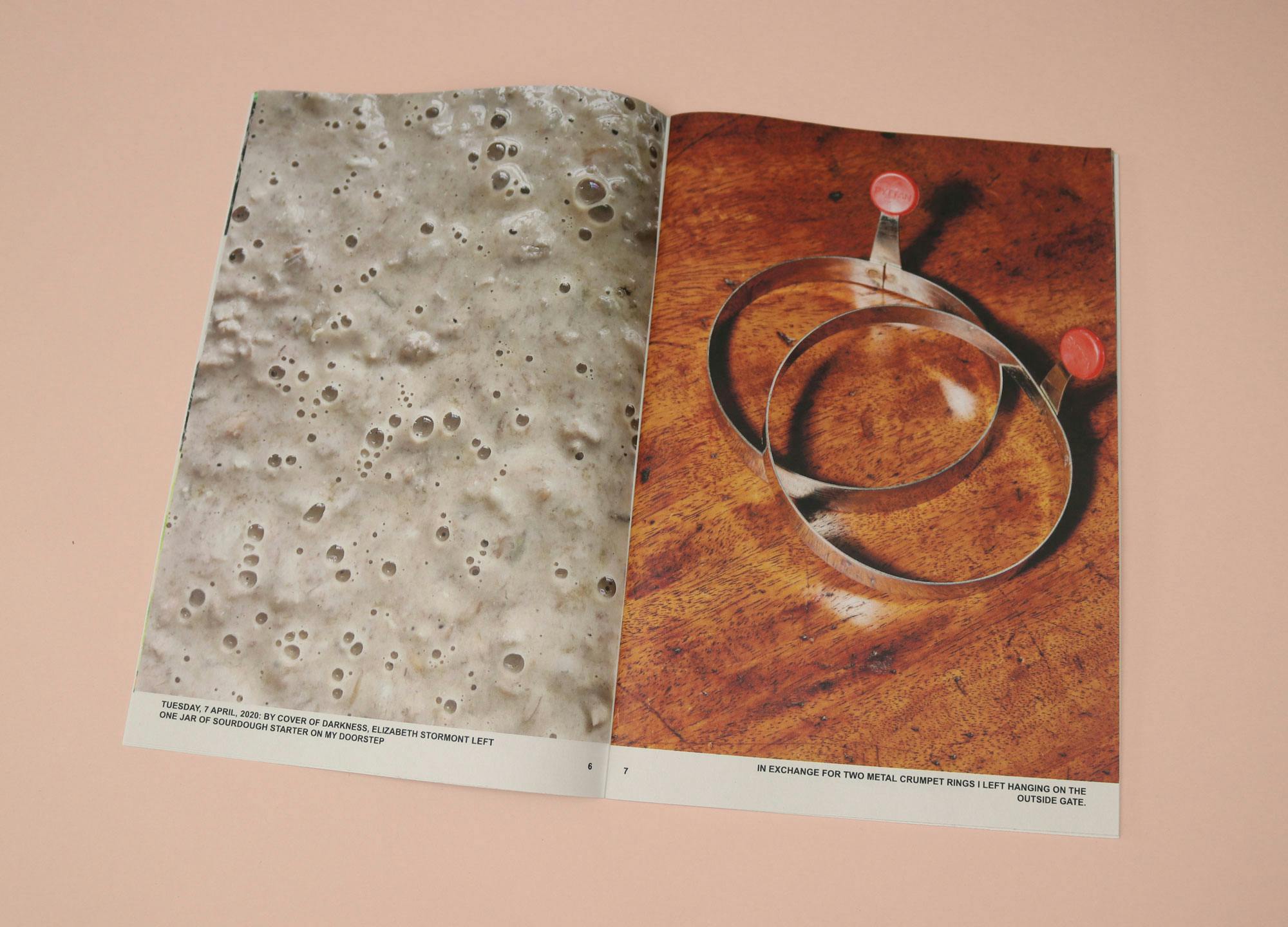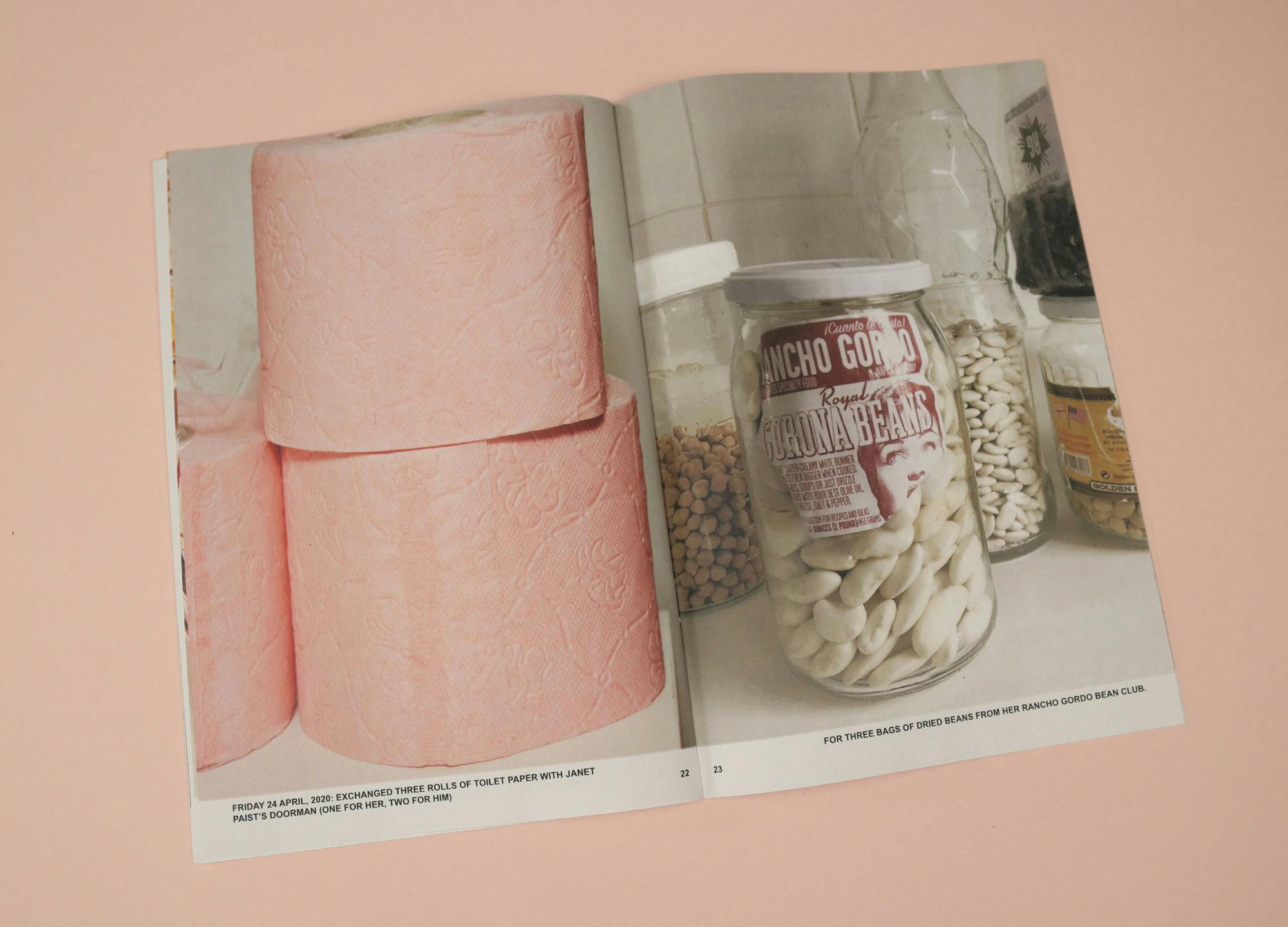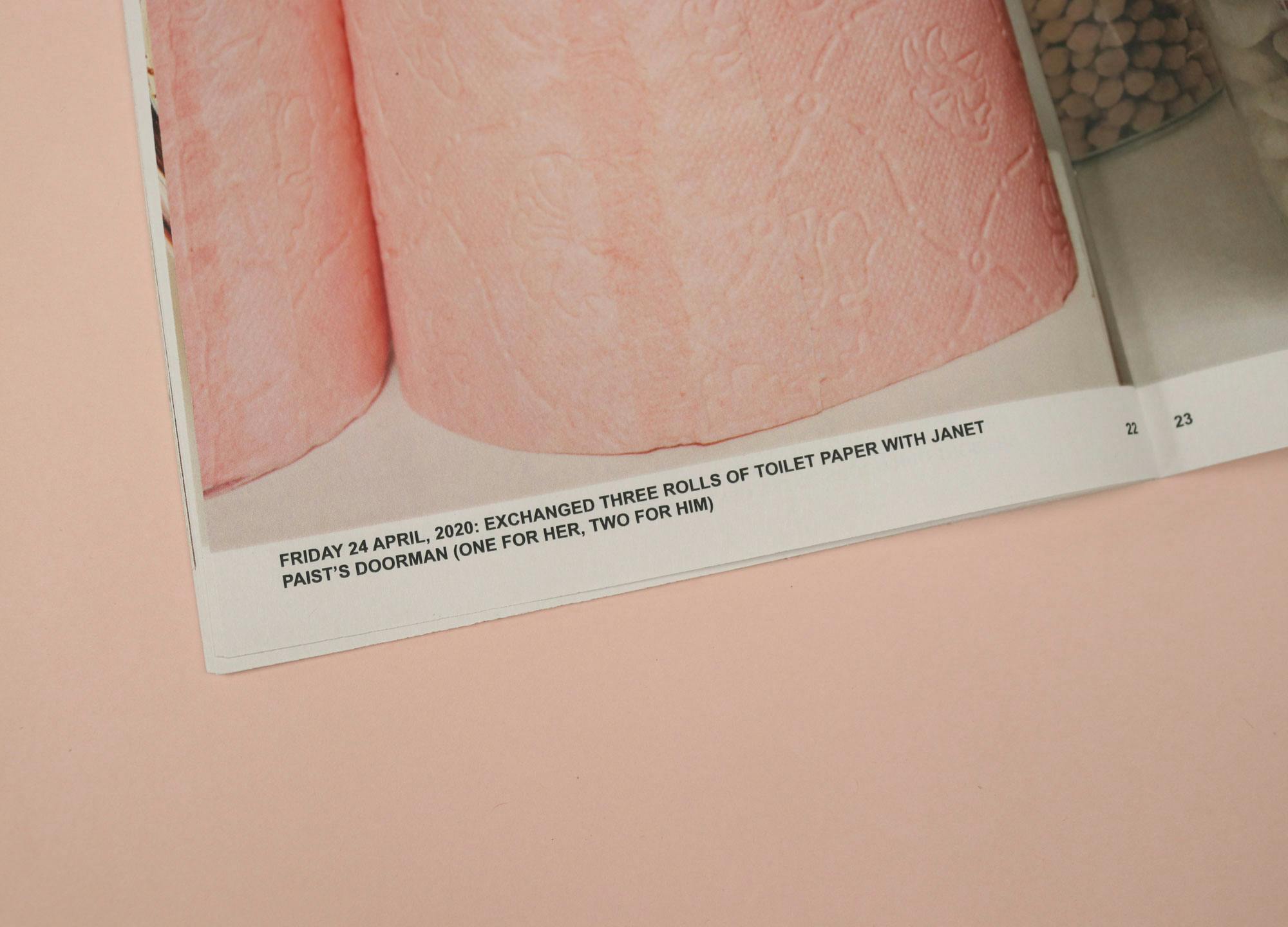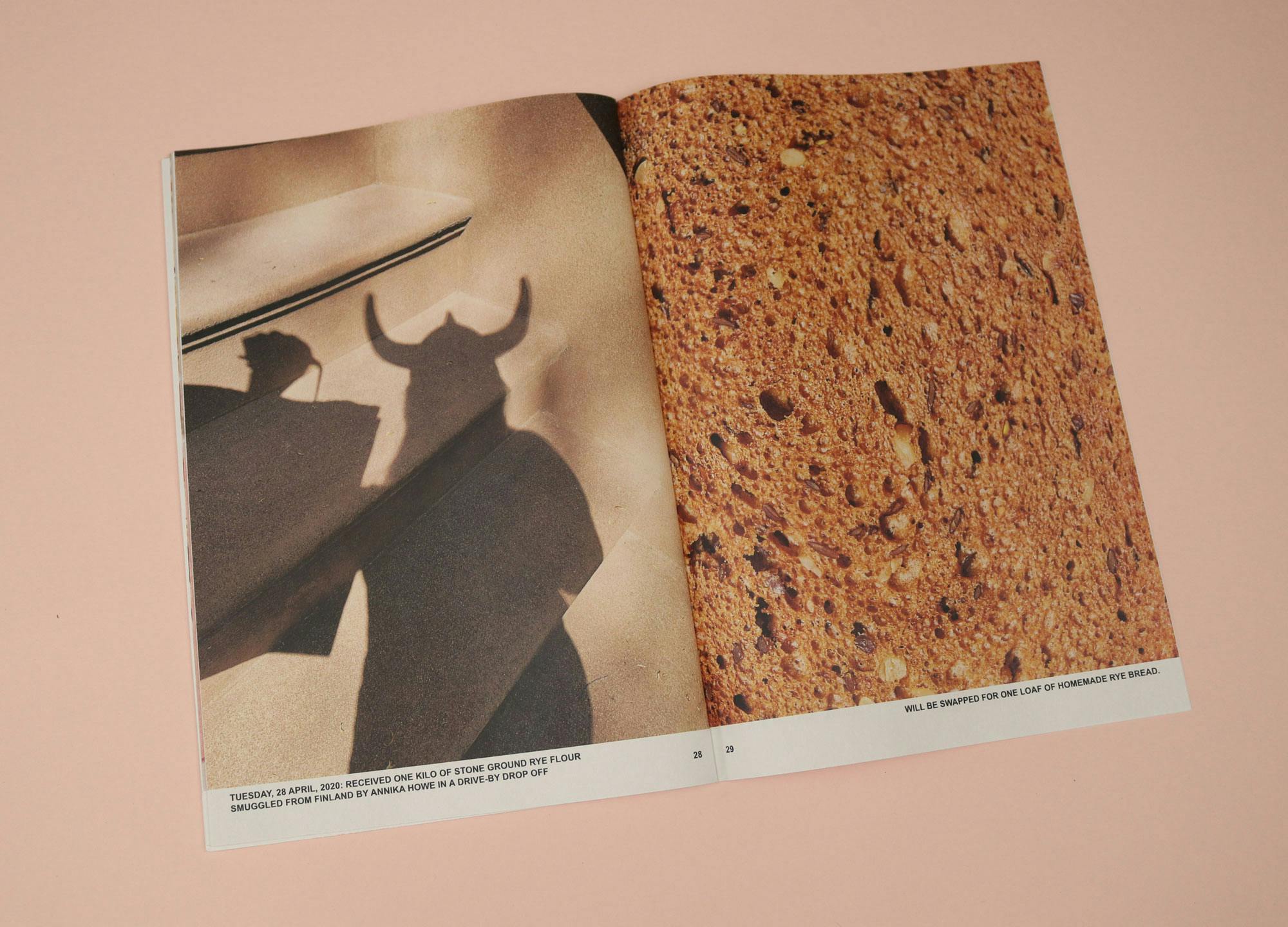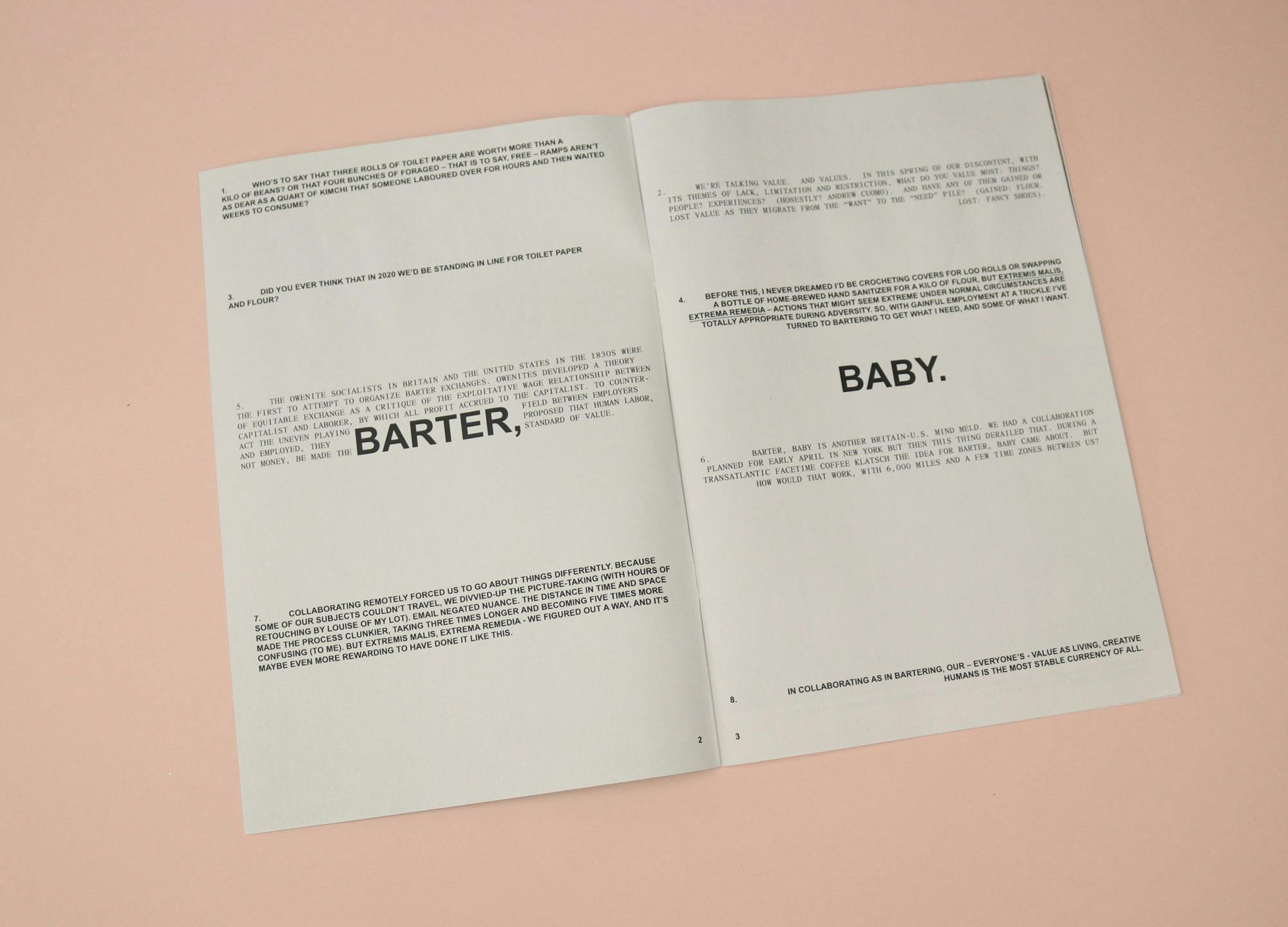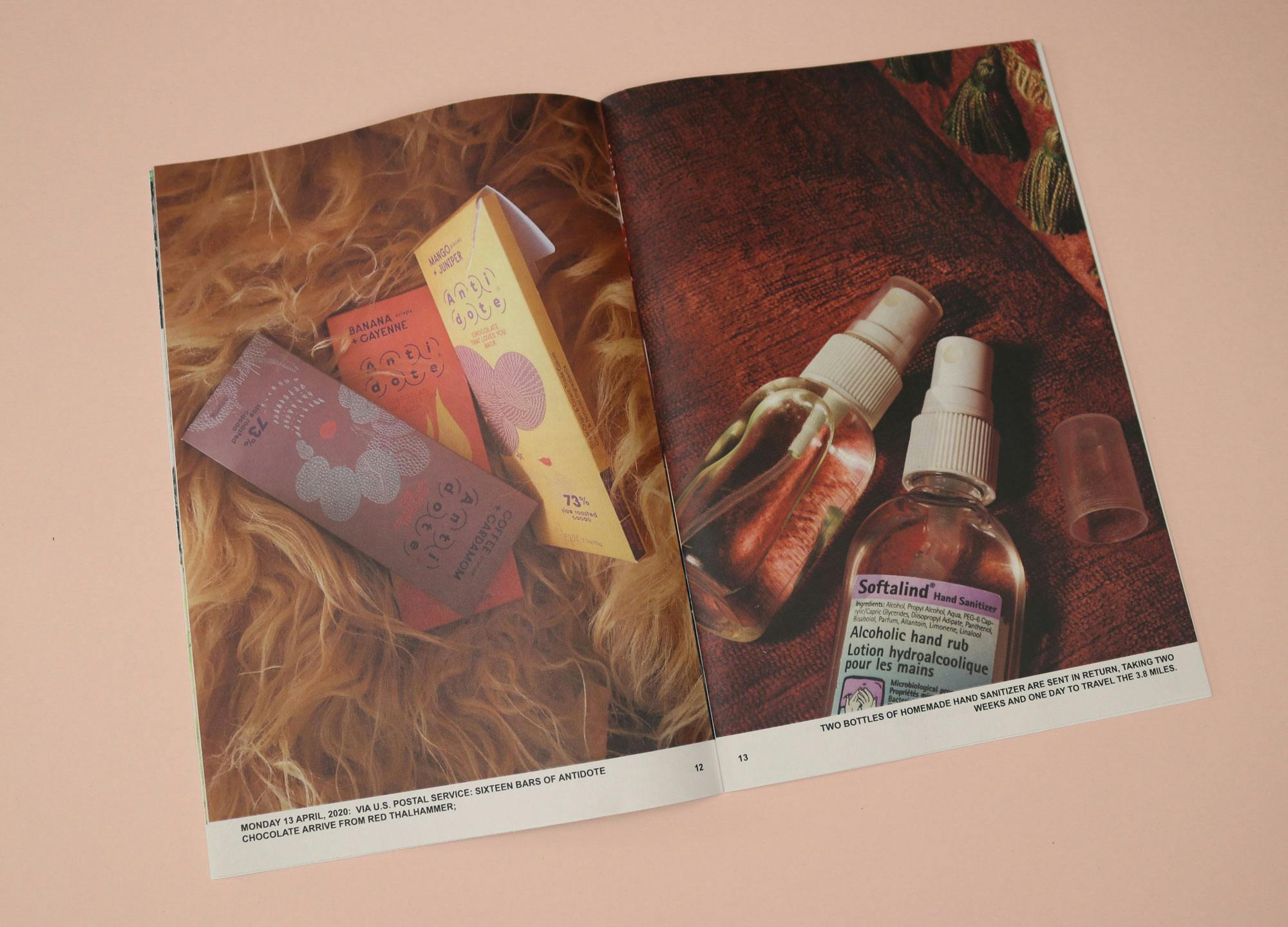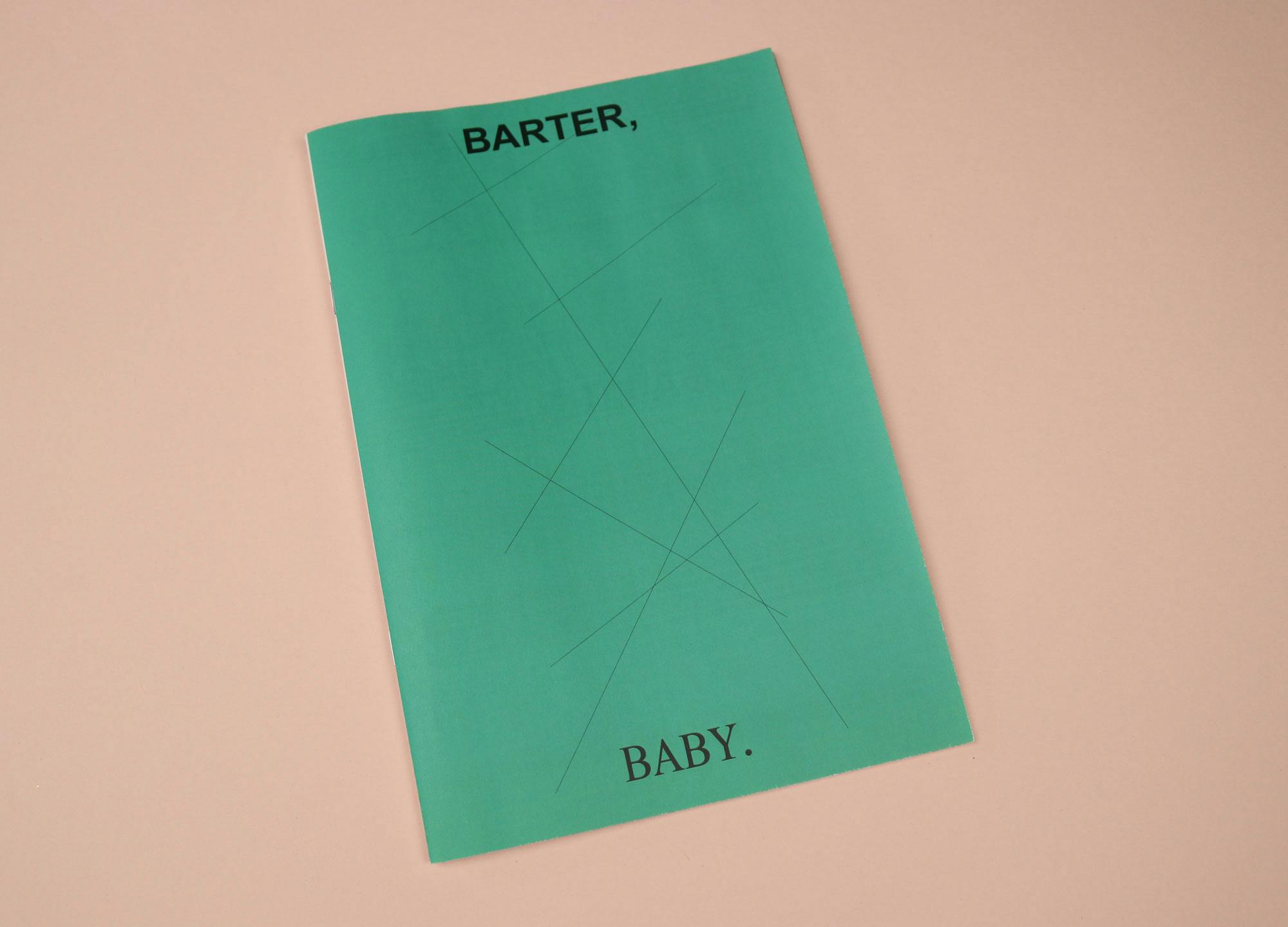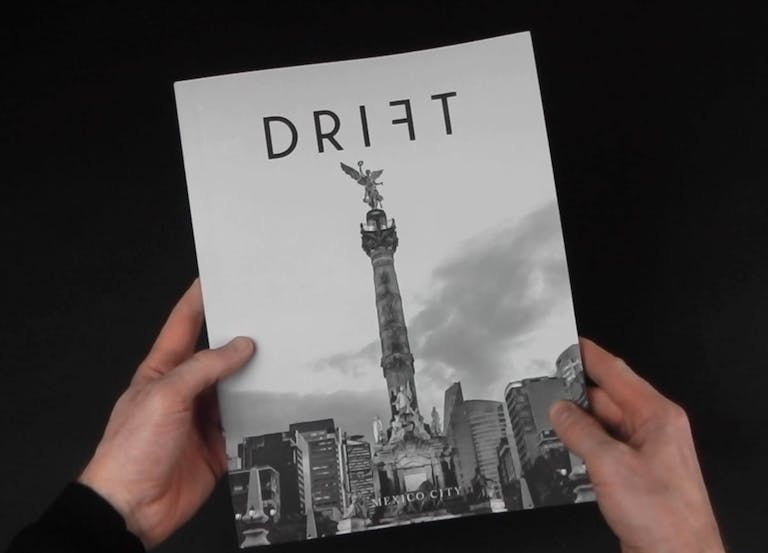Barter, Baby.
One of the many sumptuous images in Barter, Baby zooms in on dough. The caption: “Under cover of darkness, Elizabeth Stormont left a jar of sourdough starter on my doorstep/ in exchange for two metal crumpet rings I left hanging on the outside gate”. Made in the middle of a pandemic, this zine is all about illicit exchange. Toilet paper is traded for dried beans; posh chocolate for home-made hand sanitiser — and the whole thing is pictured in luscious detail by London-based food photographer Louise Hagger and the New York food stylist Victoria Granof.
The most satisfying thing about this zine is that all the pieces — food photographs, doorstep assignations, meal plans — feed into one another. Flowers are swapped “via latex-gloved messenger” for a quart of carrot soup, and then we are told how to make that soup; wakame is traded for yoghurt, and then we are given a strained yoghurt recipe. You will probably never get round to actually straining your own yoghurt, but whatever; it gives you an industrious little thrill to imagine you will.
The recipes themselves are written intimately. Milk should be heated to the point that it is “too hot to stick your finger in for more than five seconds, if that”, then cooled to “blood temperature (test it by putting a drop on your wrist)”. It reminds me of something I love about cooking — that it is instinctual and bodily — and of the kind of cook, out of fashion now, who used to spit in the pan to check if it was hot enough to fry. This practicality works in contrast to the photographs, which are mostly dreamy and tongue-in-cheek: for stone ground rye flour “smuggled over from Finland”, for example, we see just the shadow of the smuggler — she is wearing Viking horns.
Bartering, Granof writes on the first page of the magazine, is the fruit of another transatlantic collaboration: the Owenite Socialists in Britain and the United States in the 1830s were the first to propose that human labour, not money, be made the standard of value.
It’s worth noting that the only things being swapped on these pages are delicacies. Perhaps it’s a bit of a stretch to think of crumpet rings, and the people who own them, in socialist terms. But the idea of exchange, and a shift in what we value, is an interesting one. “In collaboration as in bartering, our — everyone’s — value as living, creative humans is the most stable currency of all”, Granof continues. It is comforting, and new, to think of creativity as something stable.
